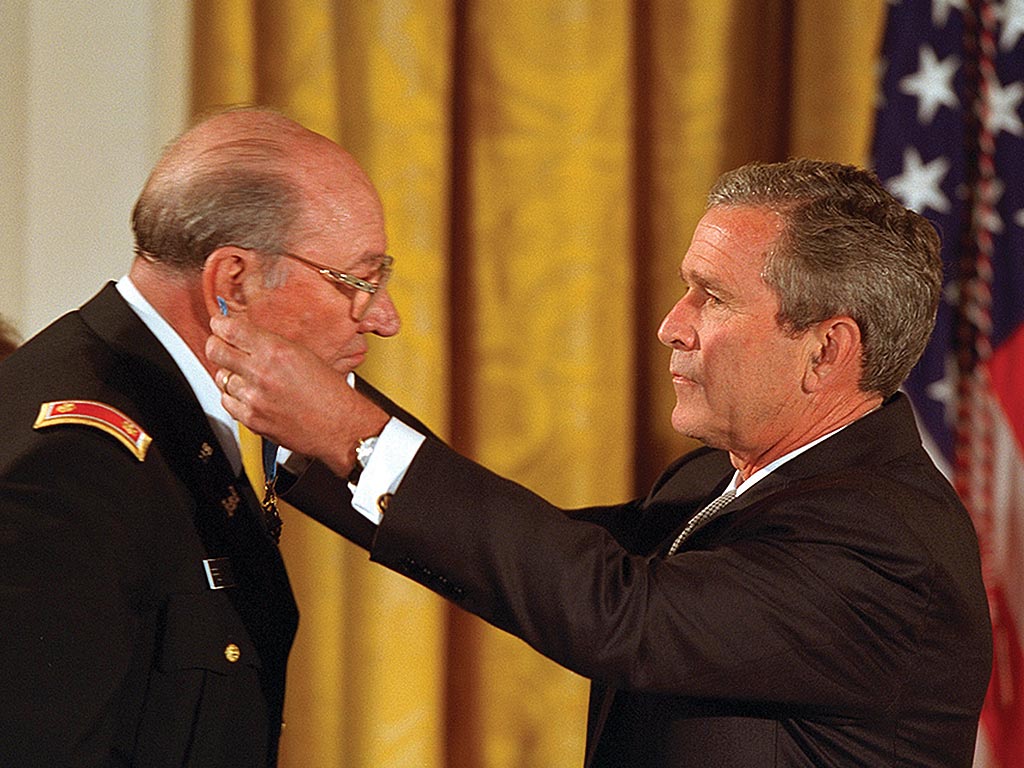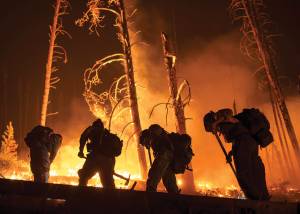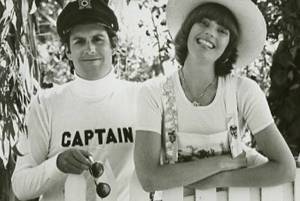By KATHLEEN MULROY
Captain Ed Freeman was the very definition of a war hero: A soldier who risked his life under extremely dangerous conditions in order to save others. As an Army captain in the Vietnam War, Freeman volunteered for a very risky mission he knew might be his last, and he rescued many men because of his bravery.
Freeman, one of several children, was born on Nov. 20, 1927, on his parents’ farm in Hattiesburg, Mississippi. In 1944, he left high school before graduating, in order to join the Navy. Freeman served on an oiler that provided petroleum to combat ships in the Pacific during World War II.
After the war ended, he went back to finish high school then enlisted in the Army. He was a Master Sergeant in the Army Corps of Engineers, but he fought in Korea as an infantryman. Freeman took part in the Battle of Pork Chop Hill and was awarded a Battlefield Commission in 1953.
After he returned to the United States, he applied for flight school but was rejected because he was considered too tall at 6′ 4″.
Eventually, the height requirements relaxed, and he was able to attend, and graduate from, flight school. For the next decade, Freeman flew around the world for the Army, mapping countries, first in fixed-wing aircrafts then in helicopters.
Freeman was close to retiring when the United States entered the war in Vietnam. Since he was an experienced pilot, he was assigned to the 229th Assault Helicopter Battalion.
The 229th was soon sent to deliver troops to what became known as the Battle of Ia Drang, which was the first major battle between U.S. and North Vietnamese troops. (The battle inspired the book We Were Soldiers Once … And Young, which was turned into a similarly titled movie, We Were Soldiers, in 2002.)
On November 14, 1965, Freeman was the flight leader and second-in-command of a 16-helicopter lift unit when he and his men were ordered to drop infantrymen from the 1st Battalion, 7th Cavalry Regiment, into a remote landing zone beside the Ia Drang River, along the Cambodian border. Then, after the fifth drop, a heavily armed enemy force opened fire.
The attack was so intense that, once Freeman’s crew returned to the staging area, all helicopter operations into the landing zone were shut down.
But the men on the ground were taking on heavy casualties and running low on ammunition and supplies. At the staging area, the commanding officer, Army Major Bruce Crandall, called for a volunteer to fly back in with him to help the soldiers. Freeman was the only person who raised his hand. For many hours, Freeman and Crandall flew unarmed helicopters—many of which had to be switched out because they received multiple hits—into the hot zone to deliver critically needed ammunition, water, and medical supplies. (Military records show these flights had a direct and positive impact on the battle’s outcome.)
When medical evacuation helicopter crews refused to fly into the zone because of the extreme level of danger, Freeman and Crandall volunteered to make those flights as well. They flew at least 14 different times to a small emergency landing zone within 200 meters of the enemy, to evacuate an estimated 70 seriously wounded soldiers.
Records show that some of these men “would not have survived had (Freeman and Crandall) not acted.”
Freeman was initially awarded the Distinguished Flying Cross for his bravery in action, but after decades of lobbying by men with whom he served, including Major Crandall, the award was eventually upgraded. He received the Medal of Honor on July 16, 2001, from President George W. Bush. The citation read: “For numerous acts of conspicuous gallantry and extraordinary intrepidity on 14 November 1965 while serving with Company A, 229th Assault Helicopter Battalion, 1st Cavalry Division (Airmobile), action against enemy aggressor forces at LZ X-Ray, Ia Drang Valley, Republic of Vietnam.” (Crandall, who attended the ceremony, received his own Medal of Honor in 2007.)
President Bush summarized Freeman’s actions: “The man at the controls flew through the gunfire not once, not 10 times, but at least 21 times. That single helicopter brought the water, ammunition, and supplies that saved many lives on the ground. And the same pilot flew more than 70 wounded soldiers to safety.”
Freeman retired as a major in 1967 after 23 years of service. He moved to Boise, Idaho, where he raised two sons with wife Barbara.
He flew helicopters for the U.S. Department of the Interior for 20 years, herding wild horses, fighting fires, and performing animal census counts, until retiring to spend more time with his family.
Freeman died in 2008 at the age of 80 due to complications from Parkinson’s disease and was buried with full military honors in the Idaho State Veterans Cemetery. ISI









